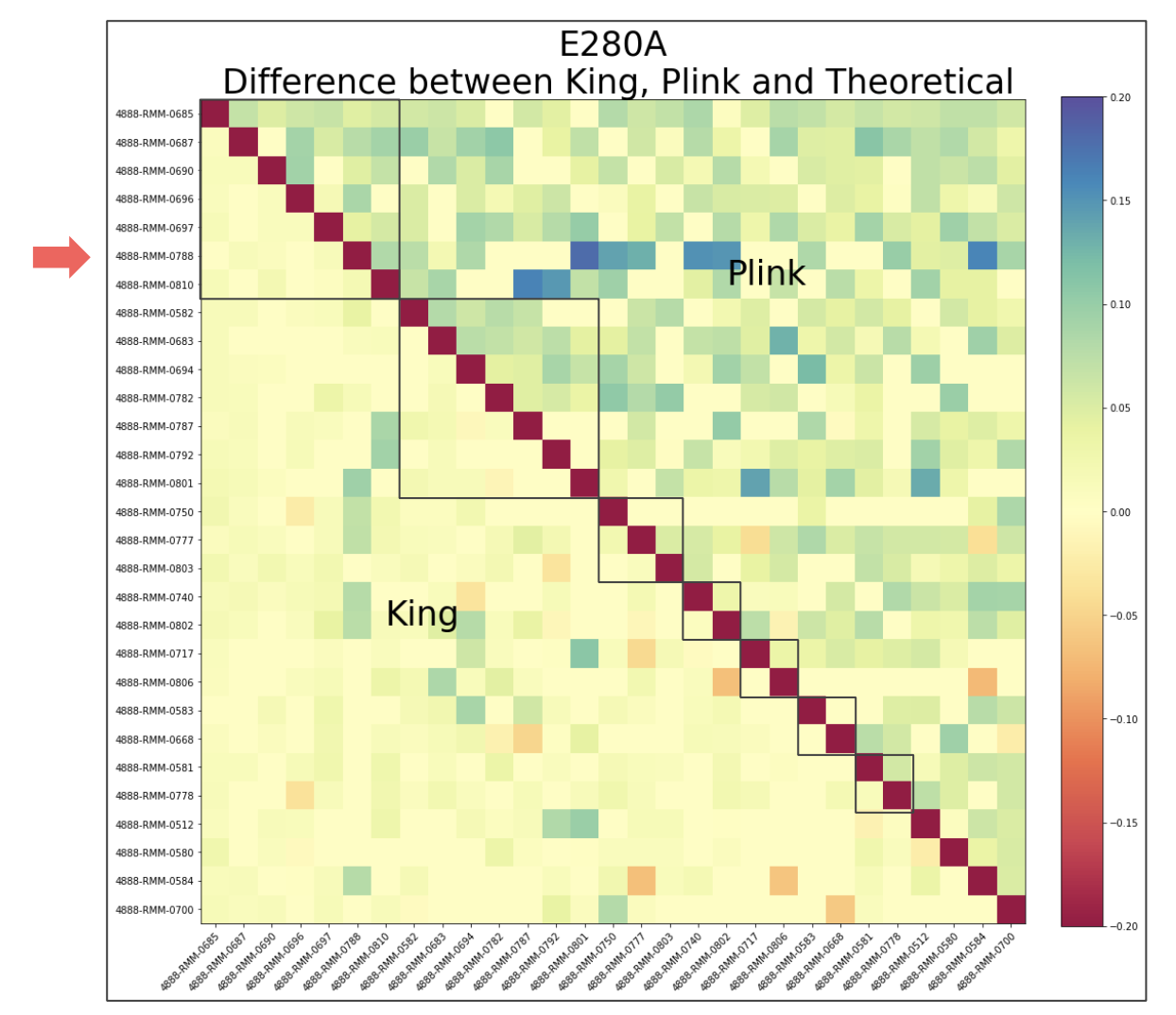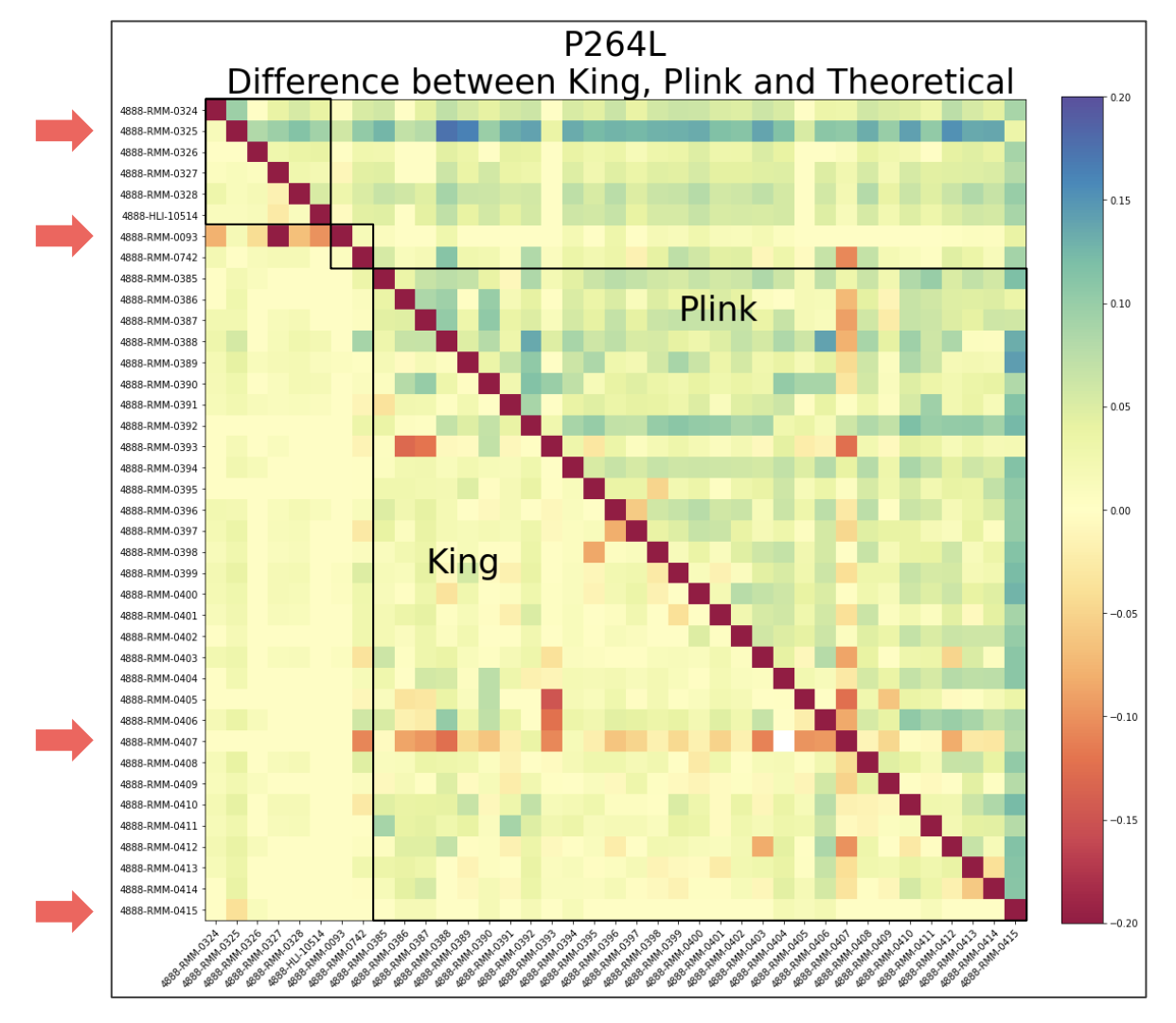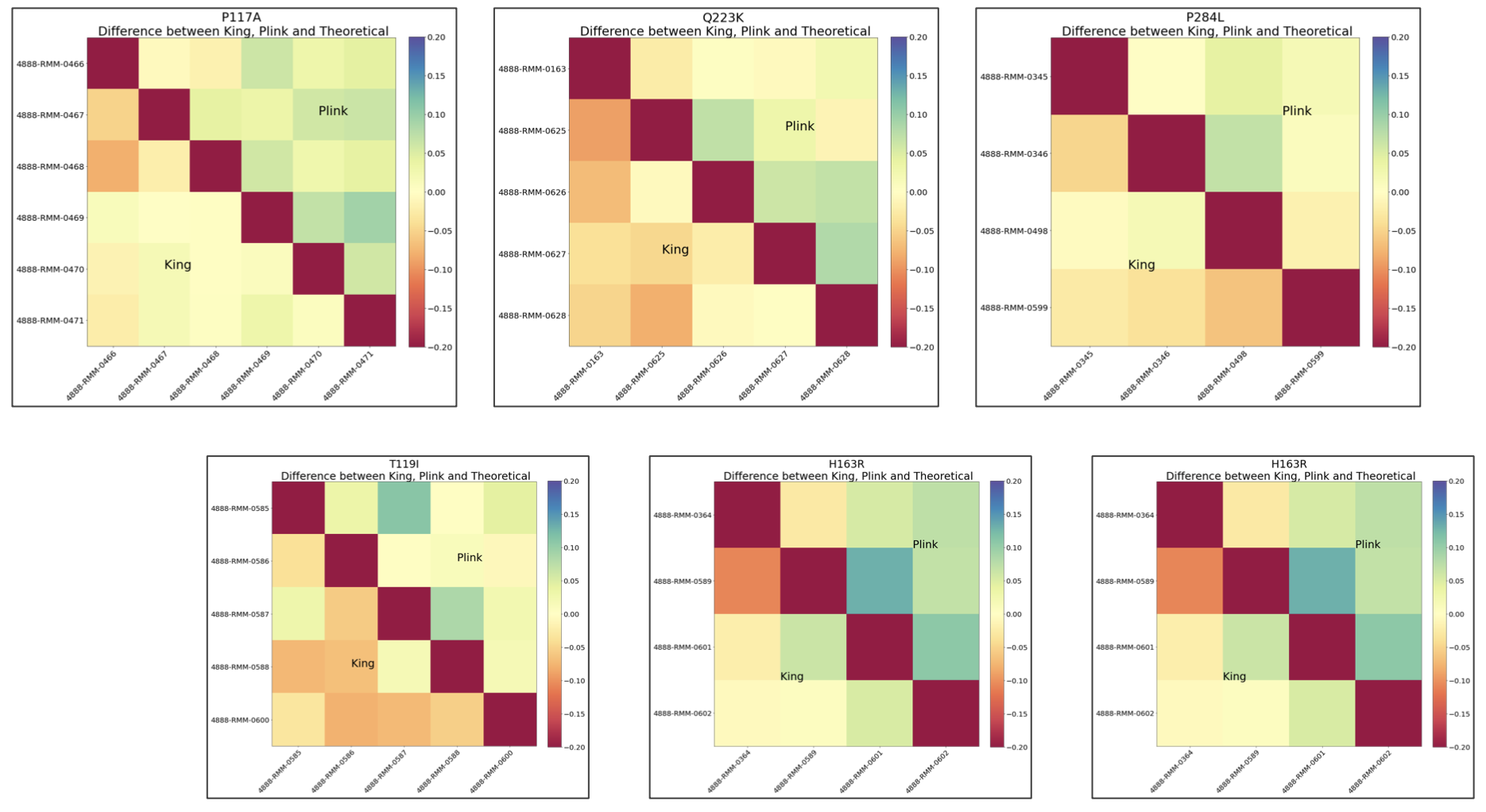NRI - Update 3¶
April 25, 2020
Helen Huang, Shivam Misra, Priya Padmanabhan, Surya Pugal, Yixiao Yue
Task 1 Wrap Up¶
As a continuation from the heatmap of I416T variant from update 2, we explored all of the other ones in the same manner to see how the values of Plink, King, and Kinship2 differed amongst them.
Summary¶
At the end of Task 1, as discussed in the above section, we have analyzed the family structures of all PSEN1 variants and calculated the coefficient of relatedness for every pair of individuals using the pedigree information given. With that, for each PSEN1 variant, we now have an idea about how each mutation-carrying individual is related to each other (ex. parent-offspring, siblings, etc.) from the pedigree perspective. Moving on, we are going to analyze their relationship from the genome level, by comparing their genome sequences, in order to finish up our Goal #1 (Calculate how many generations ago was the common ancestor for each variant).
Task 2 Purpose¶
The main purpose of task 2 is to see how each mutation-carrying individual is related to others on the genome level quantitatively. As presented in Update 1, Identical By Descent (IBD) describes that two or more individuals share similar nucleotide sequences and inherit that shared segment from a common ancestor; thus, IBD length is correlated with historical relationship. So in task2, we are going to calculate the length of the shared DNA segment (IBD length) of each pair of individual, and analyze the historical relationship based on that.
Software¶
Data¶
Phased VCF Files¶
Contains phased genetic data including chromosome, haplotypes of the individuals
Hap-IBD Files¶
Contains genetic data including chromosome and IBD information
To be used in the Hap-IBD program
Data Processing¶
The tools we made use of include vcftools, as well as plink, king, and kinship2 from the earlier updates. We obtained an excel file which contains pairs of individuals of interest, along with their corresponding haplotypes, IBD lengths (in terms of unit known as centimorgans), and start and end points of the commonly shared segments within nucleotide sequences. We were also with a text file containing the variants associated with certain families.
Data Analysis¶
Using the files, we looked at which individuals were carriers of genetic Alzheimer’s. To do this, we looked at 1) if they were labeled as having the same haplotype and 2) if the segment overlapped with the region corresponding to the PSEN1 mutation (73603143 to 73690399). We also had to re-do some of our analysis after meeting with our PI after we found that some of the carriers did not match with what was expected, which we determine to be the result of looking at other non-significant individuals.
Visualization¶
This set of visualization is aiming to answer the question that “Do we find all the expected IBD mutation carrying segment”? The results are presented in a heatmap/matrix format. Shown on both axises are the mutation-carrying individuals of the specific variant; for each pair of individuals, black represents that we do find the expected IBD segment whereas white represents that we do not find the expected IBD segment.
I416T¶
For all the pairs of individuals that we expect to see an IBD relationship, we do observe that in the Hap-IBD output. Per the heatmap, all pairwise relationship are black (meaning have the IBD relationship). In addition, becasue only one family has this mutation, we do not worry about any relationship across families.
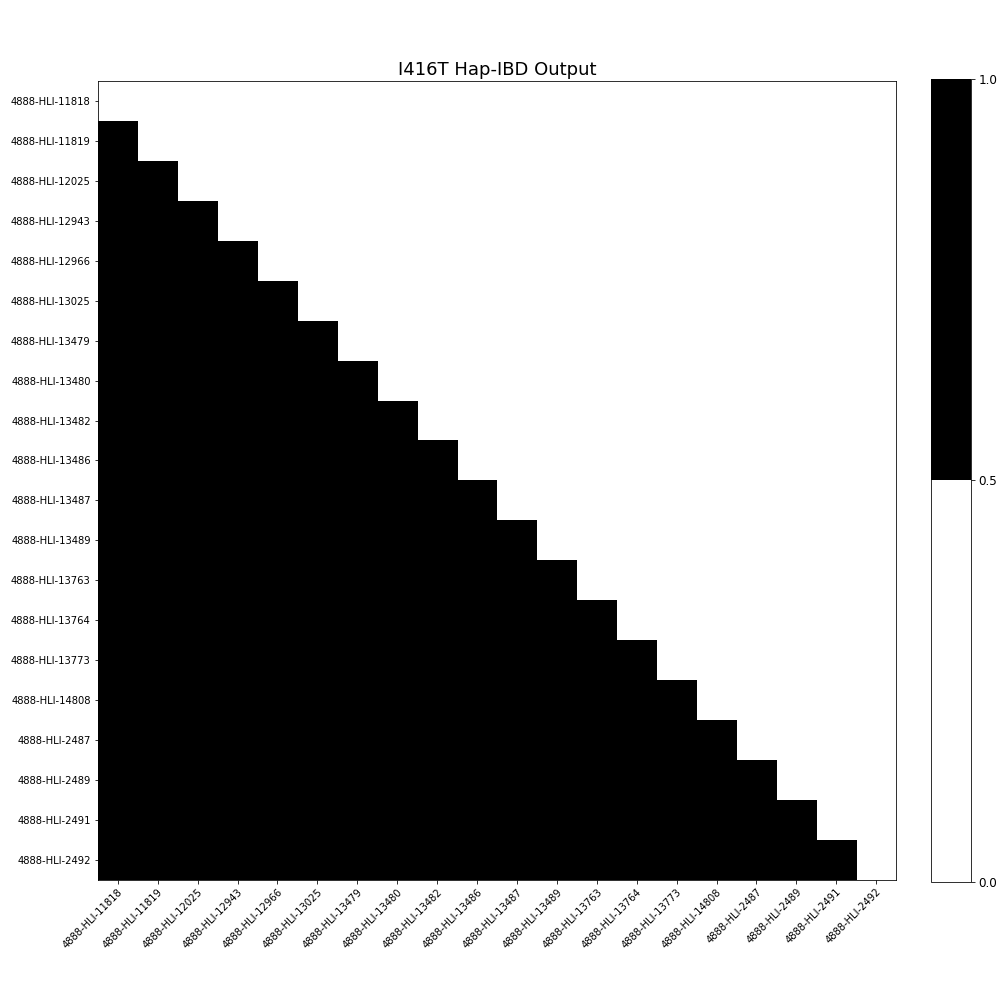
E280A¶
Considering how there are multiple families who carry this mutation, it is natural that not all pairs of individuals have an IBD relationship. To see if there was a pattern in terms of each individual family, the individuals were sorted based on family ID. Each red square represents a family. It appears that even within each family, not all individuals have an IBD relationship. The reasoning behind why this is the case will need to be investigated further.
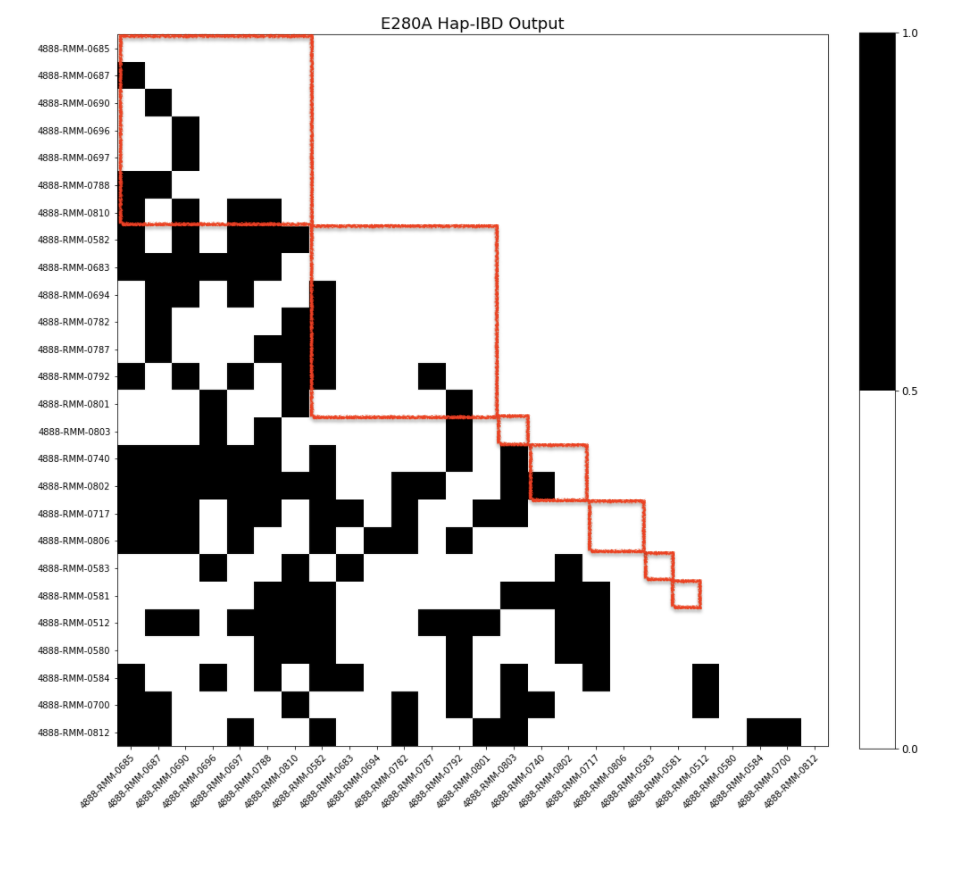
Future Plan¶
Second Phase of Task 2
Compare the IBD length we obtained in Task 2 to the coefficient of relatedness we obtained in Task 1
Thus, verify and analyze whether the IBD segments are as long as we expect

